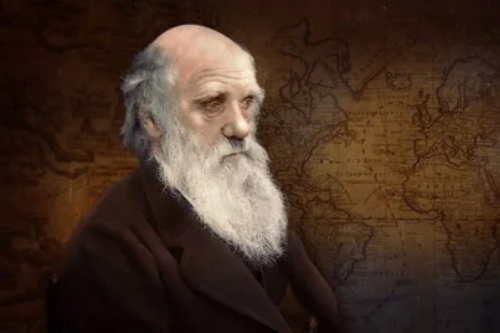Today’s Guest Writer is: Mark A. Korodan
Charles Darwin was unable to fully grasp or accept to what extent gene variation existed in the parent stock. He believed that the variety of phenotypes exhibited in dogs could only come about from more than one parent stock (species), and that several wild species had to be the source. Darwin believed that if the first dogs were created, they would all look alike, and genetic variance would serve no purpose or convey any advantage to the species. The concept of genetic variance arising naturally in a population is absolutely critical to Darwin’s hypothesis. He could not give the Creator credit for its existence.
Because variation is perceived to be so important to the hypothesis of evolution, and the fact that there is no evidence showing evolution has occurred, taxonomists (a biologist who specializes in the naming of organisms) were inclined to split up individual populations into smaller groups of individuals that look similar and called them “species” in an effort to imply evolution has occurred. A Chihuahua looks nothing like a Saint Bernard, but taxonomists are forced to give them the same species name, Canis familiaris, because of their DNA. In contrast, the coyote (Canis latrans) looks just like a small gray wolf (Canis lupus), but the two are given different names, even though they can interbreed and produce fertile young, all in an effort to show evolution has occurred. Today taxonomists are forced to consider genetics when assigning names to species. The gray wolf, Canis lupus, is recognized by many to be the parent stock of all canids. If taxonomy were bound only by science and logic the coyote would be named Canis lupus latrans, and the gray wolf Canis lupus lupus. The second epithet in the name indicates the subspecies.

Genetics should be the primary factor in determining what is and is not a species. If more weight was given to the genotype, taxonomy would be more accurate in showing the relationship within and between species. For instance, if the coyote was named Canis lupus latrans, latrans being the subspecies epithet, one would know that the gray wolf (Canis lupus) and coyote are closely related and able to interbreed and produce fertile offspring. The number of species worldwide would decrease significantly if taxonomists considered genetics first. This approach would be difficult to apply to paleontology where only fossilized bones are used to determine what is or isn’t the same species. When one considers the difference in the bone structure of a Chihuahua and a Saint Bernard, it isn’t difficult to imagine that some of the dinosaurs described as unique species may in reality, be varieties of the same species. Because the science of genetics was unknown to Darwin and scientists in the nineteenth century, they could not define species in any usable scientific terms. The terms species and variety were often interchanged.

The “modern evolutionary synthesis” as it was termed, was an attempt to unite evolution to genetics. What Darwin and evolutionists today believe concerning gradualism cannot be reconciled with what is now known about genetics and point mutations. The science of genetics has proven that evolution as a hypothesis has failed. Evolution has not, nor ever could occur. Evolutionists have yet to discover the mechanism/process by which organisms can add any amount of genetic code (without deleterious effect) to what was inherited from the parents.
The term “microevolution” was coined by evolutionists in an attempt to attach evolution to observed changes in gene frequency in various populations. Changes in gene frequency can be caused by man through the use of pesticides, herbicides, drugs, or some other chemical. Since all the organisms in any given population are not genetically identical, the chemical treatment will affect each individual differently. While most of the target organisms will die, some will live on to propagate the next generation, a population “resistant” to the treatment. The survivors and their unique genetic makeup already existed as variants in the original population. The individuals that died and the ones that survived are still the same species. No evolution has occurred. Recall the example of the genus Canis. While a Chihuahua does not look like a Saint Bernard, they are both genetically dogs and individuals in the same population. A change in gene frequency and genetic variation cannot result in the formation of a new species. The term microevolution is misleading because no evolution has actually occurred.
Most scientists don’t bother to read Darwin’s work. There is nothing in OOS that supports the idea that evolution has occurred or is the primary cause of the diversity of life on our planet. The hypothesis of evolution has not and cannot change the way we “do” science. For instance, a physician preparing for surgery does not first consider what has evolved into what, but only considers the patient and what is presently known about human anatomy and physiology. Wild speculations about origins have no bearing on successful operations or treatments. The philosophy of evolution has been a hindrance to science. All the time and resources spent trying to prove evolution has occurred should have been used to find a cure for cancer or for some other benefit to humanity.

In the 165 years since the publishing of OOS, science has not been able to find any evidence that would validate Darwin’s hypothesis, even in the most general terms. The taxonomist, the world’s oldest profession, is now free to name organisms in a manner that reflects their true relationship to other organisms, using primarily genetics/DNA and logic. If Darwin failed in his quest to find the root cause of the observed diversity of life, why do evolutionists continue to exalt his life and works? The short answer is, Darwin is all they have. If evolutionists were to discard Darwin’s work, and evolution as a failed hypothesis, there would be only one alternative left. And they can’t accept that option.
